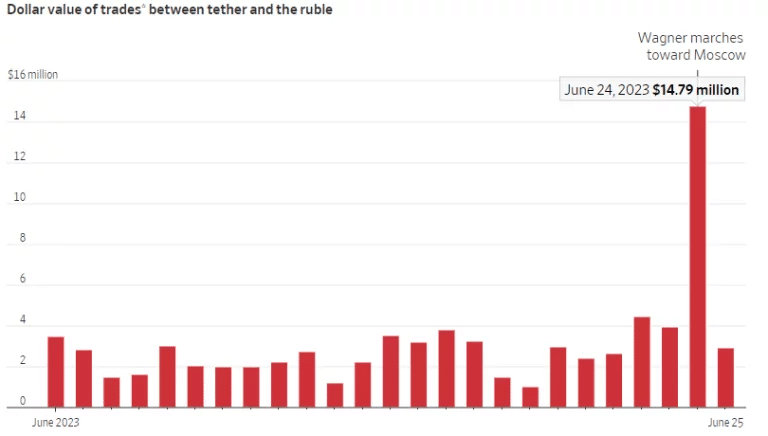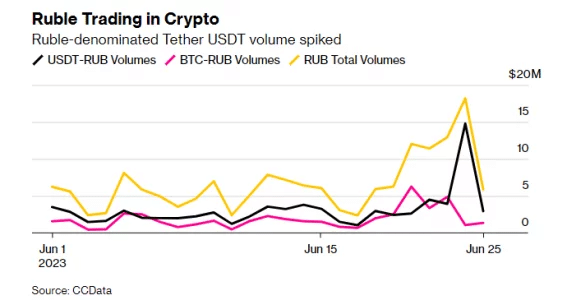During the rebellion organised by the paramilitary group Wagner this weekend against the Russian government, we can observe thanks to on-chain data that exchange volumes from the rouble to the USDT drastically increased. This is further evidence of people’s tendency to turn to cryptocurrencies during periods of great instability.
Russians turned to USDT this weekend
According to on-chain data published by CCData, Russian citizens appear to have sought refuge in cryptocurrencies during the rebellion organised by the paramilitary group Wagner this weekend.
As we can see below, some Russians swapped their roubles for the USDT stablecoin issued by Tether. Just under 15 million dollars were exchanged on Saturday, compared with just 4 million the day before the uprising, i.e. almost 4 times less

Figure 1 – Trading volumes between the rouble and USDT on the Russian CEX
It seems that those who used these exchanges wanted to move to a less volatile asset than the rouble, with the BTC/RUB pair being abandoned in favour of the USDT/RUB pair, as we can see below. According to CCData, the main cryptocurrency exchange platforms still offering these pairs in Russia are Binance, Cryptonex, HitBTC and Coinsbit.

Figure 2 – Trading volumes on USDT/RUB (black), BTC-RUB (pink) and total volumes (yellow)
Specifically, according to Kaiko, such volumes have not been seen since December 2021. It should also be taken into account that in light of the sanctions imposed by the West on Russia, cryptocurrency trading has become more complicated than before.
Tether-Ruble trade volume spiked to its highest level since December during this weekend’s Wagner rebellion. pic.twitter.com/YXOGsuidaM
– Kaiko (@KaikoData) June 26, 2023
These movements once again demonstrate the trend for people to turn to crypto-currencies in times of political or economic instability, as was also seen at the start of the Russian-Ukrainian conflict (see chart above).
